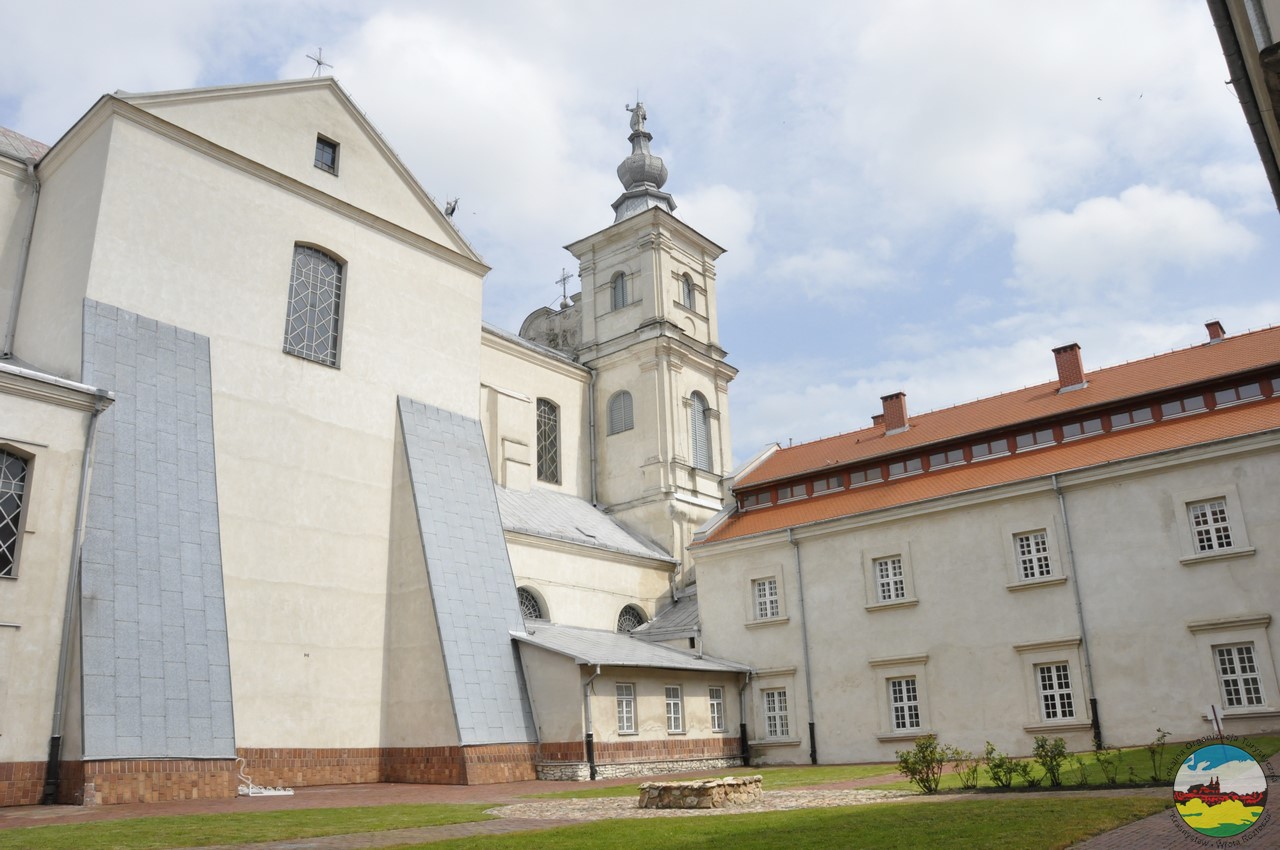Overview
The objects currently occupied by the exhibition halls of the Regional Museum in Krasnystaw were once part of a large monastery complex, in which the Jesuits resided. The jesuit college was erected in the years 1695 – 1741 at the same time with the church, creating a spacious quadrangle with a courtyard inside. The Jesuits were brought to Krasnystaw on the initiative of the bishop of Chełm Stanisław Święcicki. The investment in the construction of the college, with greater or lesser problems, was carried out until 1704, when, during the Great Northern War, Krasnystaw was occupied by the Swedish army under the command of General Stenbock. He gives orders to devastate and set fire to the city, including college under construction. In 1708, the cornerstone of the new college was laid and building works began. After the end of wars and plunder in 1717 that renovation and construction works at the residence and schools began with greater intensity. In 1720, the previous residence was raised to the rank of a college.
In the first half of the eighteenth century, one very talented and hard-working monk stayed there for many years - Kacper Niesiecki. His passion was to collect information about Polish noble and magnate families. The result of his laborious over 20 years of scientific work became a four-volume work, which abbreviated name is ‘Korona Polska’. Currently, this work is the basis for heraldic works. The Krasnystaw College ceased its activity in 1773 after the liquidation of the Jesuit Order by Pope Clement IV. After the dissolution of the Order, all institutions became the property of the State Treasury and were to be used for the education and upbringing of young people.
After the takeover of the college building by the National Education Commission, a three-class school was established in it. The church was converted into a cathedral church in 1776 and taken over by the bishop of Chełm.
In 1780, as a result of financial problems, the KEN authorities handed over the jesuit buildings to the bishop of Chełm, who in the following year ceded all property rights to the chapter. Only two brick houses remained in the hands of the bishop, one of which, standing right next to the church, is called the bishop's palace.
In 1811, the military authorities located a military hospital in the former college. In the interwar period (1918-1939) in the west wing of the college there was a cinema, the rest of the facility was inhabited by military families. During the German occupation during World War II, a German garrison was stationed here. In 1943 it had about 700 soldiers. A battalion of so-called recovered soldiers was stationed here waiting to be sent to the front after healing their wounds.
After the World War II, municipal offices were introduced into the building of the former college, apartments and food warehouses were created.
Since 1958, part of the floor in the middle wing and the library room have been adapted for museum purposes. The initiator of the creation of the museum was Józef Nikodem Kłosowski, who in 1930 in the pages of ‘Wieś krasnostawska’ began the action of collecting exhibits. The organizer and first head of the Museum established in 1954 was Zygmunt Tokarzewski – an art teacher, regionalist, Home Army soldier.
The museum has nearly 13,000 exhibits in the field of archaeology, history, numismatics, ethnography, hopping and brewing, as well as ancient and sacred art. In the museum, you can, among other things, go down to the renovated underground, which is a substitute for the old system of dungeons and corridors existing under the city, as well as see the remaining piece of the medieval city walls. In one of the rooms (the former refectory) there are rococo frescoes from the first half of the XVIII century. In 1973, the collection of a professional book collection began, which led to the creation of a museum library, currently numbering over 6,000 volumes. Since 1973 a professional collection has been collecting, which led to the creation of a museum library, currently numbering over 6,000 volumes.
From 2 August 2006 to 30 April 2008, the college building underwent renovations along with the restoration of the original shape of the college's roofs. During the works, the demolition of all secondary elements and partitions existing in each of the tenant rooms was carried out. The ground level within the courtyard and external walls has been restored.
Since 2008, in addition to the museum, it has also housed the District Public Library and the Youth House of Culture.
Facilities
- Admission for children
- Toilet nearby: yes
- Shooting possible (without flash): yes
- Parking for passenger cars: yes
Restrictions
- Admission with pets: no
- Admission with ice cream: no
- No smoking: yes
More interesting places
The former men’s gymnasium
The manor complex
- The manor complex
- Sikorskiego 10, 22-300 Krasnystaw

















